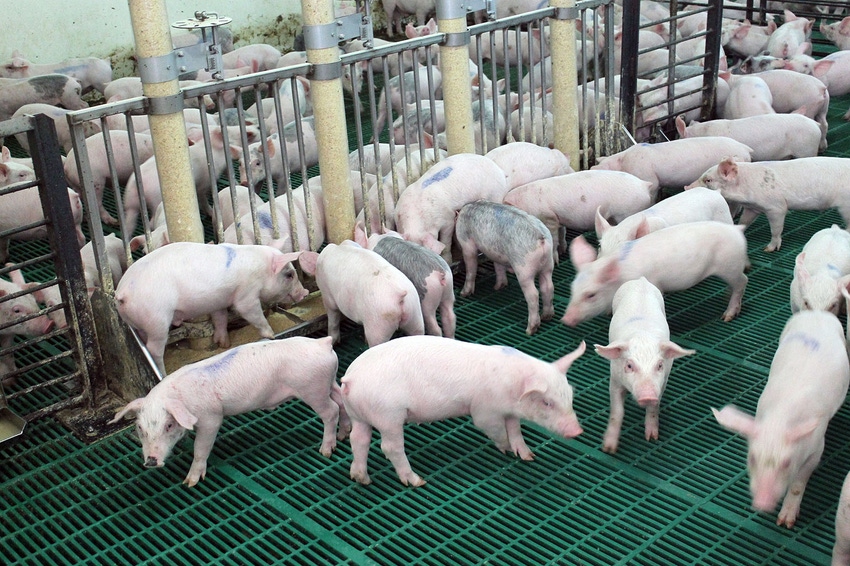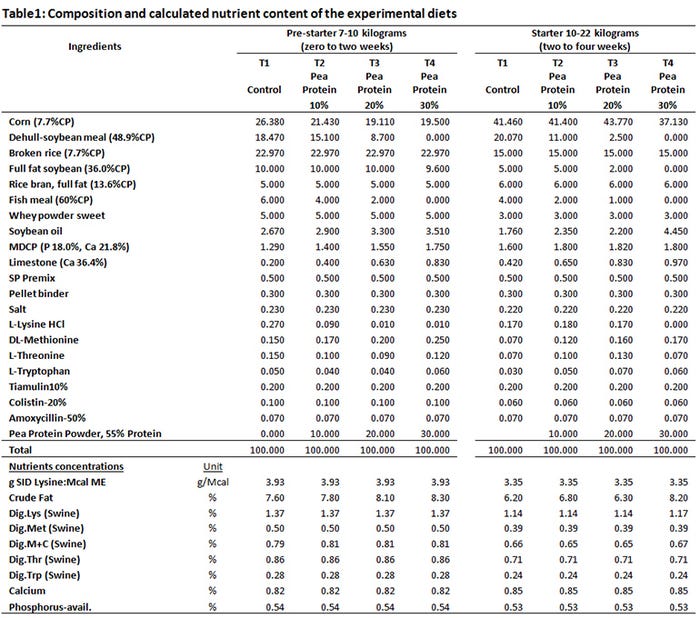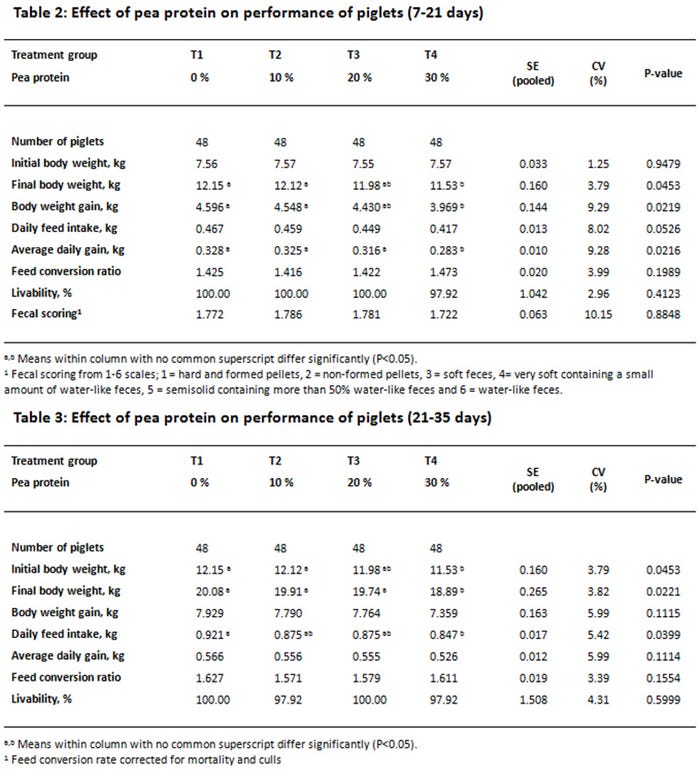Pea protein has a place in nursery pig feed
Pea protein is a high-quality source that can work well in nursery pig diets. It simply becomes a matter of economics on when and how much to include in a nursery diet.
July 6, 2017

By Bob Thaler, South Dakota State University, Brookings, S.D., and Kim Koch, Northern Crops Institute, Fargo, N.D.
In the United States and other parts of the world, lower-grade yellow peas can be viewed as an acceptable replacement for expensive alternative feed ingredients such as fish meal, dried whey, plasma protein, blood meal and soy protein concentrate in nursery pig diets. Also, fishmeal continues to increase in price, probably a reflection of a decrease in world fish stocks.
Animal feed experts have suggested that the inclusion of peas or pea proteins as a functional ingredient in baby pig feed may be associated with superior villi development and vitality, resulting in not only improved intestinal health but also overall increases in nutrient uptake that lead to reduced sickness and mortality rates and more rapid weight gain in baby pigs. This also provides another option for producers wanting to feed diets free of any animal-based products.
A trial was conducted in Thailand to determine if pea protein was an acceptable amino acid source in nursery pig diets. Pea protein was added to the diets at the expense of fishmeal and soybean meal. Pea Protein 55 is the product tested, and is made by extracting the soluble pea protein from yellow-split peas. It is from ground peas in that most of the starch and fiber is removed. The product contains 55% protein, 3.82% total lysine, 0.5% crude fiber and 4% starch.

Materials and methods
A total of 192 crossbred piglets (Landrace x Large White x Duroc), weaned at 25 days of age, averaged 6.75 kilograms body weight, were randomly allocated to four treatments with eight replications. Four diets were formulated with different inclusion rate of pea protein, 0%, 10%, 20% and 30% and were used as the treatment diets in each growing phase.
Days 0-7: All pigs on a common diet to get off to a uniform start post-weaning
- Growth performance
Days 7-21: Pigs received one of four Phase 1 experimental diets
- Growth performance
- Intestinal health (on Day 21, the medium weight barrow in every pen will be humanely sacrificed and intestinal tissues taken to assess gut health: villi height, crypt depth and V/C ratio)
- Daily pen average fecal scores will be recorded at a constant time on Days 7 through 21 of the trial using a 1-6 scale. The Scoring System is as follows.
1: hard and formed pellets
2: non-formed pellets
3: soft feces
4: very soft, containing a small amount of water-like feces
5: semisolid, containing more than 50% water-like feces
6: water-like feces
Days 21-35: Pigs received one of four Phase 2 experimental diets
- Growth performance

Summary
There were no differences between treatments the first week with all pigs on a common starter diet. Growth performance was normal and the pigs got off to a good start.
Phase 1 (Days 7-21):
For the overall two-week period for Phase 1, pea protein worked well up to 20% inclusion. At 30% pea protein in the diet, feed intake, and consequently, daily gains, were reduced. However, feed efficiency was not affected. Pea protein up to 30% inclusion had no negative impact on piglet gut health, which is critical to overall piglet health and performance.
There were no differences in any of the gut health measurements (villi height, crypt depth and V/C ratio) even at the highest inclusion level of pea protein. This is supported by the fact that there were no differences in fecal scores between any of the treatments. These two things are very important. Physiologically, high levels of pea protein had no negative effect on gut health, which means there was no allergenic effect.
The Phase 2 response (days 21-35) was very similar to the Phase 1 response. Pigs perform well with up to 20% pea protein in their diets
Take home message
Pea protein works well up to 20% inclusion rates in both Phase 1 and Phase 2 nursery diets. Pea protein, up to 30% of the diet, had no effect on feed efficiency, gut health or fecal scores. The only negative thing observed with higher levels of pea protein is that there appeared to be a feed intake issue, which then resulted in reduced gains. This is supported by the lack of difference in feed efficiency between treatments.
Again, physiologically, pea protein is a high-quality source that can work well in nursery pig diets. It simply becomes a matter of economics on when and how much to include in a nursery diet.
You May Also Like



